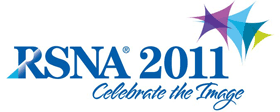
Abstract Archives of the RSNA, 2011
Thomas Henzler MD, Presenter: Nothing to Disclose
1) Clinical relevance of perfusion imaging with CT. 2) Past, current and future CT approaches of lung perfusion in patients with pulmonary embolism. 3) CT scanning protocols for lung perfusion imaging in patients with pulmonary embolism. 4) How to inject contrast material for lung perfusion imaging with CT. 5) Post-processing of CT perfusion data. 6) Clinical evaluation of perfusion data in patients with pulmonary embolism. 7) Scientific evidence of lung perfusion imaging in patients with pulmonary embolism.
Pulmonary embolism (PE) is a very common disease associated with a significant morbidity and mortality. Since the clinical diagnosis of PE is difficult imaging plays a key role to establish the diagnosis of PE. Multi-detector CT has emerged as the diagnostic standard for the assessment of patients with suspected PE within the past years. Although CT allows the visualization of small peripheral PE in the majority of cases, the hemodynamic significance of these findings remains somewhat unclear, especially if accidentally found in asymptomatic patients. Moreover, the condition of many patients with large emboli is surprisingly good, especially if the emboli are nonocclusive. Thus, perfusion imaging, might be clinically useful for patient management, even though the diagnosis of PE has already been made with CT.
In the past, various techniques have been evaluated for the assessment of lung perfusion in patients with suspected PE using CT. Dynamic multi-section electron beam CT has been evaluated for the evaluation of pulmonary perfusion. Another attempt is to generate perfusion-weighted maps by color-coding the density of lung parenchyma in contrast-enhanced CTA. A subtraction technique of whole-thorax multi-detector CT scans acquired before and after intravenous contrast within a single breathhold has also been proposed. In all these approaches, color-coded parametric maps of lung perfusion are calculated to visualize PE-related perfusion defects. By visualizing the contrast agent distribution in the lung parenchyma, spiral dual-energy CT provides the opportunity to assess pulmonary perfusion simultaneously, and thus to assess all the relevant information within one fast examination. Because iodine shows a proportionally larger increase of CT values with decreasing X-ray tube voltage, dual-energy CT can be used to visualize the distribution of iodinated contrast material within the lung parenchyma at the time of the data acquisition.
Henzler, T,
CT Approaches for Lung Perfusion Imaging in Pulmonary Embolism. Radiological Society of North America 2011 Scientific Assembly and Annual Meeting, November 26 - December 2, 2011 ,Chicago IL.
http://archive.rsna.org/2011/11000048.html

